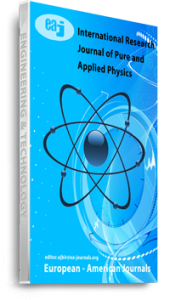Solar radiation is rapidly gaining ground as a supplement to the non renewable sources of energy, which have a finite supply. But the amount of solar radiation reaching the Earth’s surface depends on the climatic and atmospheric conditions of the locations. This work evaluates the temporal and spatial variability of the reflectivity of the Earth’s atmosphere over Ibadan, Enugu, Sokoto and Kano, in order to access the effect of the atmospheric conditions on solar radiation in the areas. The data used for this study were obtained from the International Institute of Tropical Agriculture, Ibadan (1980-2010). The model for shortwave solar energy balance at the edge of the Earth’s atmosphere was adopted in this work. The results show that seasonally, the reflectivity obtained in this work ranged from 0.52 – 0.64, 0.46-0.55, 0.38-0.53, and 0.41-0.57 for Oyo, Enugu, Sokoto and Kano respectively. Annually, the reflectivity obtained ranged from 0.48-0.65, 0.36-0.64, 0.22-0.50 and 0.36-0.60 for Ibadan, Enugu, Sokoto and Kano respectively. This result may be due to the influence of the dry, dusty tropical-continental air mass and the warm, tropical-maritime air mass which control the atmospheric conditions of Nigeria. The atmospheric conditions of the selected cities for the period under review vary from being cloudy, heavily laden with harmattan dust, cloudless (clear) to dustless (clean), hence there is high prospect of solar technology in the areas. This information is useful to solar energy technology, environmental engineers and for climatic modeling. The results obtained were compared with the results of other places having almost latitudinal location and co-ordinates similar to the selected cities.
Keywords: : Reflectivity, Earth’s atmosphere, Nigeria, Renewable Energy, Solar Radiation

